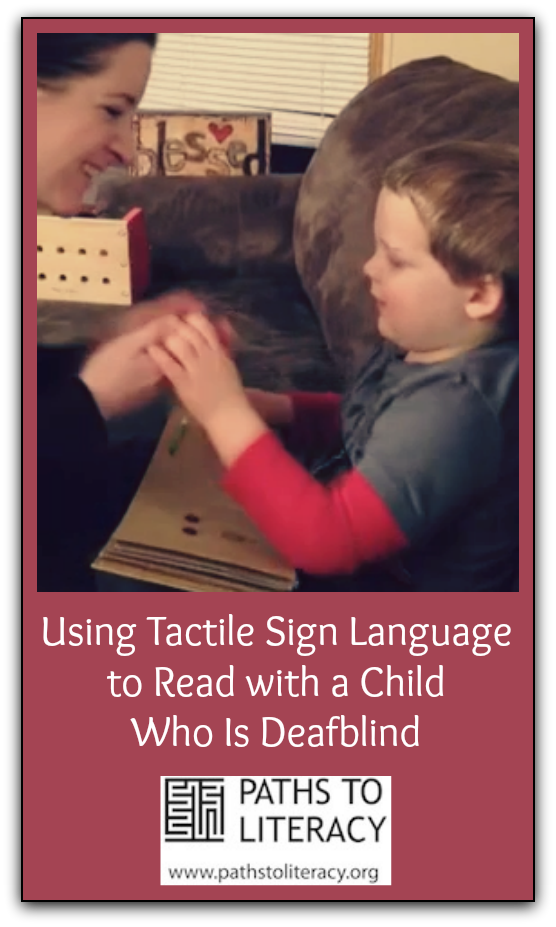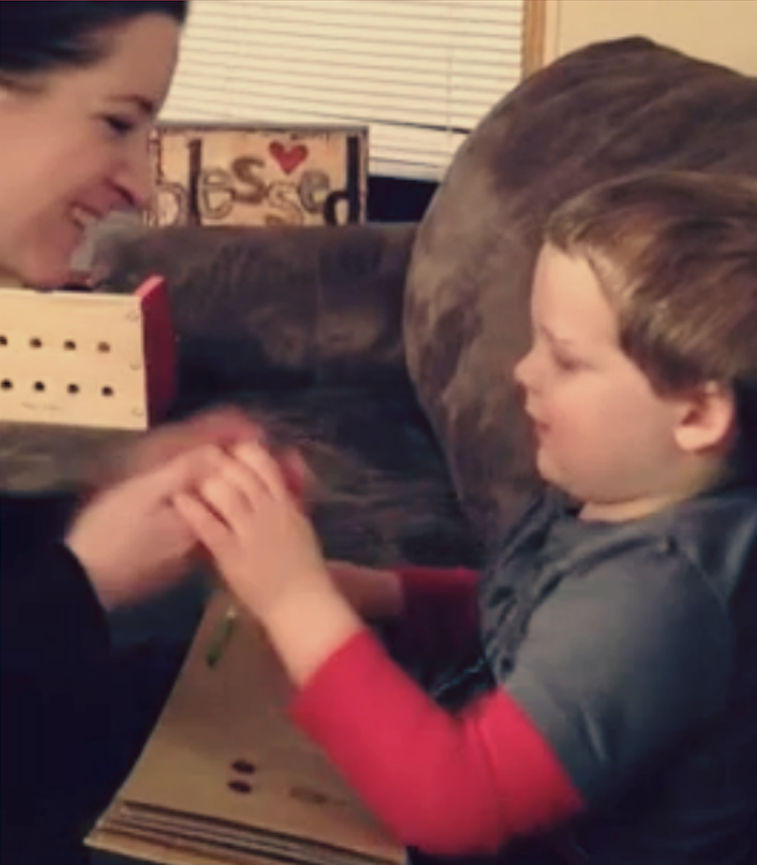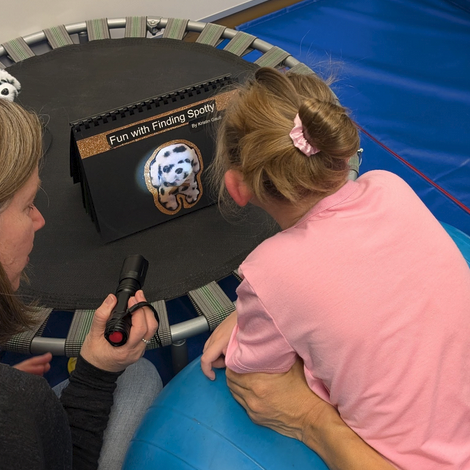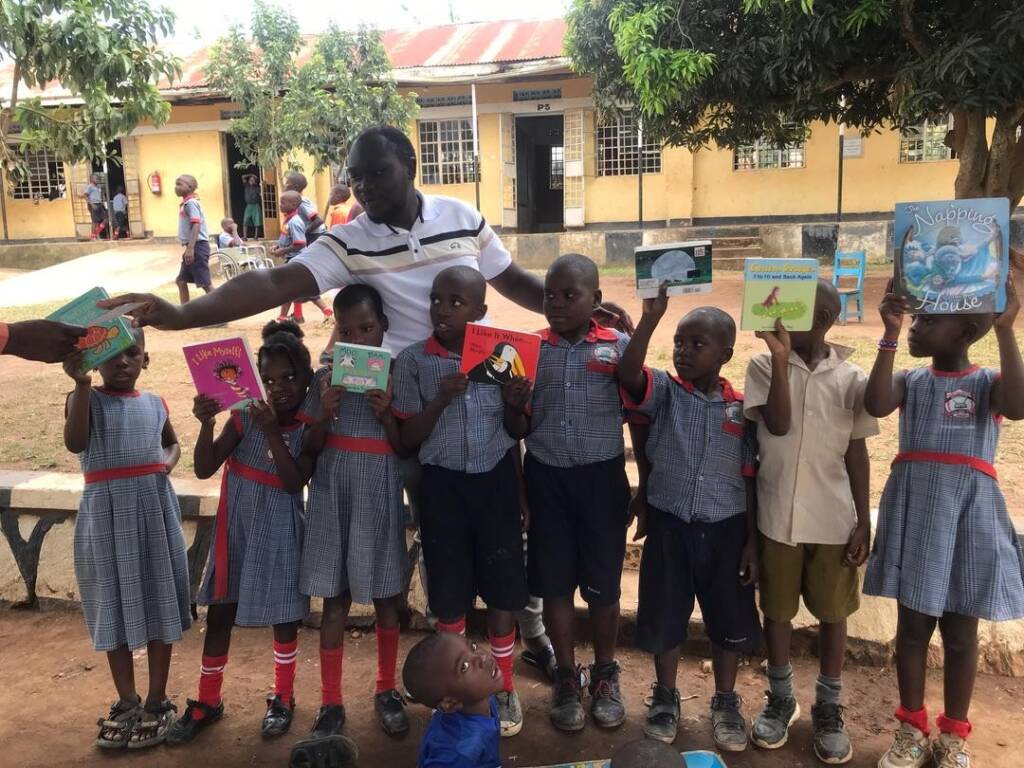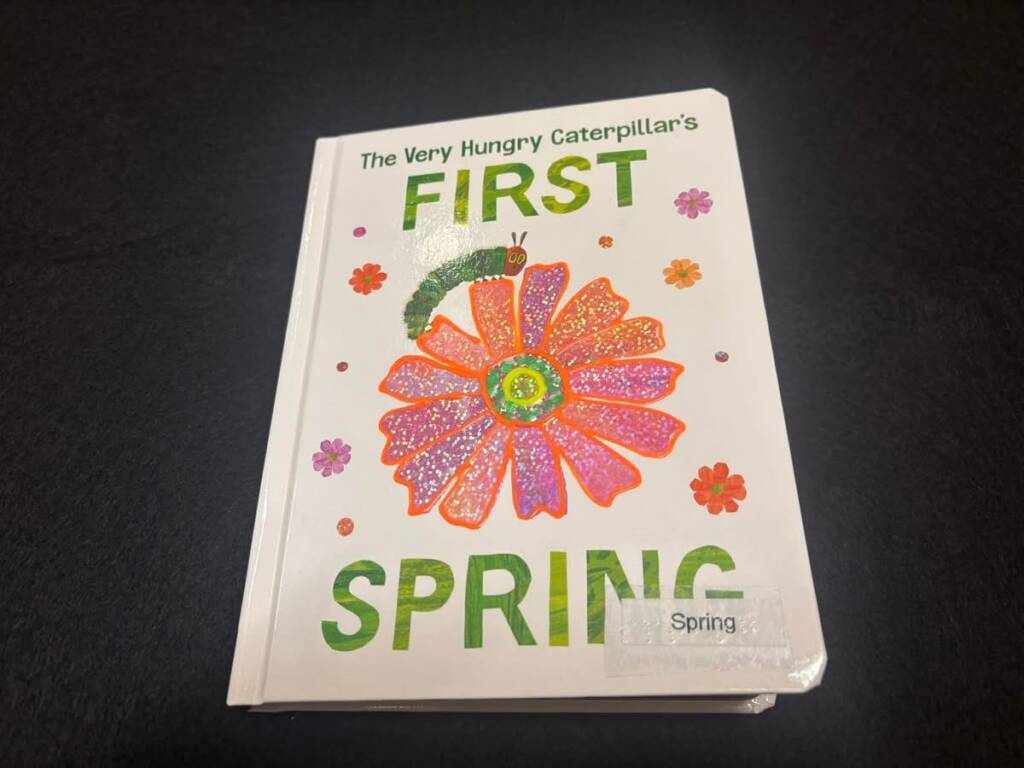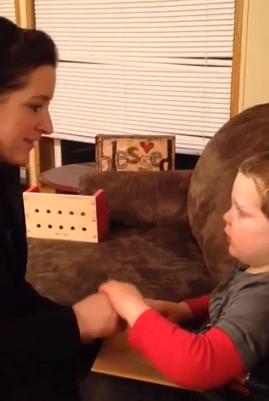 Reading books is my son Liam’s favorite thing to do. I have to say, I sure love reading with him and I love watching him enjoy books. I need to share a quick back story on Liam for those of you who don’t know. Liam was born with both vision and hearing. When he was 2 ½ he became sick with Meningitis which resulted in his becoming deafblind. To make a very long story short, after months in the hospital we were able to bring him home. Admittedly it was overwhelming at first; our world was turned upside-down. We needed to learn a new way to look at life and a new way to learn how to communicate with our son. We decided that, although our life was now different, it will still be good-great even. One of my first goals for Liam had to do with “books”. Liam used to LOVE reading before he lost his sight, and I was determined that he was going to be given the opportunity to LOVE books again. The following videos are taken 3 years after Liam became sick with Meningitis. I enjoy watching these videos and watching my boy enjoying reading. What a blessing!
Reading books is my son Liam’s favorite thing to do. I have to say, I sure love reading with him and I love watching him enjoy books. I need to share a quick back story on Liam for those of you who don’t know. Liam was born with both vision and hearing. When he was 2 ½ he became sick with Meningitis which resulted in his becoming deafblind. To make a very long story short, after months in the hospital we were able to bring him home. Admittedly it was overwhelming at first; our world was turned upside-down. We needed to learn a new way to look at life and a new way to learn how to communicate with our son. We decided that, although our life was now different, it will still be good-great even. One of my first goals for Liam had to do with “books”. Liam used to LOVE reading before he lost his sight, and I was determined that he was going to be given the opportunity to LOVE books again. The following videos are taken 3 years after Liam became sick with Meningitis. I enjoy watching these videos and watching my boy enjoying reading. What a blessing!
How I read a book with my son who is deafblind
My son communicates using Tactile American Sign Language (ASL). When we first started reading with Liam, he didn’t know many signs. I created books that had interesting textures and moving parts and many things to touch. I would also use books to teach Liam ASL. (See some of my earlier posts for examples of this: Getting Books into the Hands of My 3-Year-Old Deafblind Son; Big and Small Book; Counting Book.) Fast forward to the present: I choose or create books based on Liam’s interests and also on the learning goals I may have for him. As shown in the videos, I position myself in front of Liam at his level. I sign into his left hand, which leaves his right hand to explore the text and the tactile graphics/objects and also sign back to me if he chooses. You may notice that he sometimes feels the page and then puts his left hand out towards me. This is signaling that he is ready to receive information about the page. If I want to show him something on the page I make sure to use the ‘hand under hand’ technique instead of grabbing the tops of his hands and forcing him to touch whatever it is I wanted to show him.
Liam and Braille
I have always brailled all of Liam’s books since the beginning (exposure to braille as often as possible). Liam is not “reading” the braille in the books yet, but he does point out the braille to me and tell me “That’s braille”. He loves finding the braille on a page. He is learning to identify letters and words at school and connect meaning to the braille words. We also functionally label our home in braille as well, which he enjoys showing me. (See my post Creating a Braille-Rich Environment. ) I am excited for the day when Liam can read stories in braille to me!
Advice for anyone who wants to read with a child who is deafblind
Of course, I can only speak from my experience, but the biggest piece of advice I could give is to select or create a book based on the INTEREST of the child and the level of the child. For example if you want to read with a child who is just beginning to explore books and happens to like buttons, find all the different buttons you can and glue them to different pages of a book. Add simple braille words to the pages as well. Explore the pages together, following the child’s lead. Let the child feel you touching the pages as well. Introduce words such as button, small, big, etc. Enjoy the book together! Another example: if your child likes the outdoors, create an outdoor book together (see How to Create an Experience Book) adding actual objects from outdoors to the book (tree bark, grass, rocks, etc..) Add braille (simple words or sentences depending on level). Encourage conversation and exploring of the pages. After you have read it many times, ask questions about the pages, etc.
Liam and Mom Reading His Bible Book
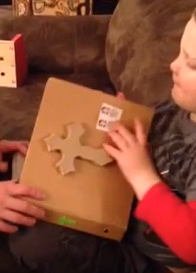
*Turn on ‘Closed Caption’ for best viewing!
Liam and Mom Reading Number 2 Counting Book
*Turn on ‘Closed Caption’ for best viewing!
